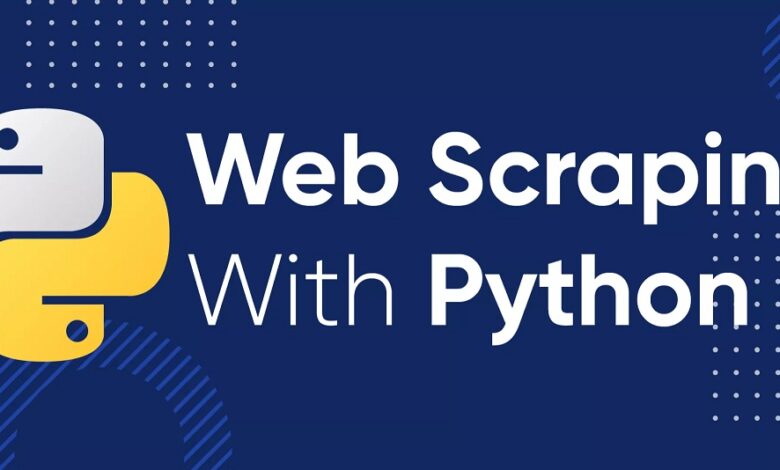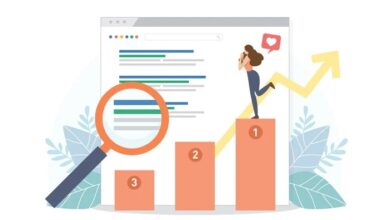Web Scraping: What to Know and Why to Choose Python

Web scraping is the process of extracting data from websites, which is a powerful tool for collecting vast information quickly and effectively. And Python is one of the most popular programming languages for the job because it’s easy to use and has a rich set of libraries.
Below, you’ll learn more about the benefits of Python web scraping and how to get started.
What Can Web Scraping Be Used For
Web scraping can be used for a wide range of applications, including:
- Market and competitor analysis: Web scraping can help gather information about the competitors’ products and services to gain insights into market trends, consumer behavior, and pricing strategies.
- Sentiment analysis: Web scrapers can collect data from social media platforms, online forums, or review websites to determine public sentiment towards a particular product, service or brand to improve products, services, and brand reputation.
- Lead generation: Extracting contact information of potential customers, such as email addresses, phone numbers, or social media profiles, can be used for targeted marketing campaigns or for building a list of potential clients.
- Content aggregation: Collecting articles or blog posts from different websites and displaying them in one place can help create curated content, build an RSS feed, or generate content for your website.
- Job scraping: Gathering information about job postings from various websites can assist in creating a job board, identifying skills required for specific positions, and determining average salaries for different professions.
- Academic research: That’s a way to collect data for academic research, like information on climate change, socio-economic indicators, or online behavior, among other topics.
Overall, web scraping is a powerful tool for gathering data and insights from the web, and its potential applications are virtually limitless.
Benefits of Using Python for Web Scraping
Thanks to its powerful libraries and frameworks, Python is one of the most popular programming languages for web scraping. They provide developers with the tools to extract data from websites quickly and easily without writing complex code.
One of the main advantages of using Python is that it’s a relatively easy language to learn. Additionally, its syntax is intuitive and easy to read, which makes it convenient to maintain and analyze code for errors.
Additionally, Python’s dynamic nature makes it easy to modify code on the fly, which is helpful for web scraping tasks that require frequent changes. It’s also a cross-platform language, meaning the code can run on various operating systems and platforms. That makes developing and deploying web scraping solutions easier, regardless of the target platform. Also check Boomproxy Alternatives
Web Scraping in Python: Step by Step
Here are the steps to follow when web scraping in Python:
- Set up the environment and initialize a Python project
To get started with web scraping in Python, you need to install the necessary libraries and create a new Python project.
- Inspect your target website
Before proceeding, you’ll need to identify the data you want to extract and understand the website’s structure. Knowing how the site reacts when you interact with it would be helpful.
- Download HTML pages
You can do that using the Requests library in Python. However, for that part, it’s necessary to know whether you’re dealing with a static-content website or a dynamic one. Additionally, in some cases, you’ll find the information you want behind a login wall.
- Parse HTML content with Beautiful Soup
A library such as Beautiful Soup will be handy for parsing your downloaded HTML content. It allows you to select HTML elements and extract the data from them conveniently.
- Export the scraped data
Finally, you need to export the scraped data. That can be done in various formats, such as CSV, JSON, or stored in a database.
What Challenges You’ll Face
Web scraping comes with several challenges, including:
- Parsing complex HTML structures: HTML pages can be complex and require advanced parsing techniques to extract the necessary data. For example, some websites use tables, nested lists, hidden content, or custom tags that require special handling, which makes the scraping process more challenging.
- CAPTCHAs: CAPTCHAs are a standard technique to prevent bots from scraping web content. This security measure requires users to complete tasks like typing in a code or selecting images to prove they’re human. Solving the challenge requires human interaction and can’t be easily automated.
- Dynamic websites: Some websites use dynamic content loading techniques, such as AJAX or JavaScript, to cause some content to appear after loading the initial HTML document. That means the web scraper may miss some of the data.
- Anti-bot techniques: These techniques include IP blocking, HTTP request headers analysis, behavioral analysis, and many more. They aim to distinguish humans from automated traffic to block the latter from accessing the website content.
These are just some of the challenges you may face while web scraping. However, with the right tools and techniques, you can overcome them and extract the data you need.
Make the Process Easier with a Web Scraping API
Web scraping APIs are a useful tool that simplifies the process of extracting data from websites by handling the complexities of web scraping. One such example is ZenRows, which provides a convenient interface to make requests and receive responses in a structured format.
One of the main benefits of ZenRows is that it’s optimized for speed and efficiency, making it particularly useful for extracting large amounts of data quickly and accurately. Another advantage is that it takes care of everything, including anti-bot bypass. Its features include premium rotating proxies, geo-targeting, and JavaScript rendering. Also check Brightdata Alternatives
You can test it out with the 1,000 free API credits you get upon registration.
Conclusion
Web scraping is a powerful tool that can help you extract valuable data quickly and easily. With Python, the process becomes even more accessible thanks to its libraries and frameworks, such as Beautiful Soup.
While there are some challenges to overcome, the benefits of web scraping far outweigh them. Namely, businesses can gain valuable insights into their competitors, customers, and markets, and individuals can find valuable information to help them make more informed decisions.
Moreover, with web scraping APIs like ZenRows, the process can be even more streamlined and effective.



